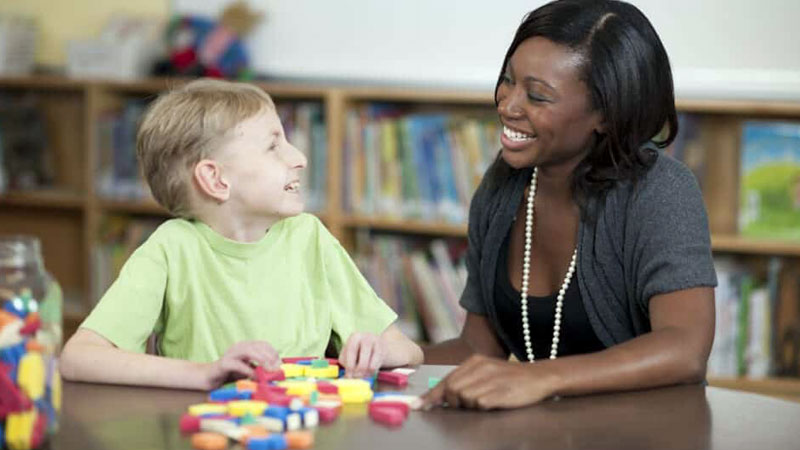Occupational Therapy
“But my child doesn’t have a job!”
It’s not obvious from the name of their profession — occupational therapists — how these incredibly talented therapists can support your children and improve their self-confidence and self-control.
In fact, to truly understand the incredible range of skills that pediatric occupational therapists use every day with their patients, you need to watch them in action. A day in the life of a pediatric occupational therapist varies with type of support needed with each child.
 Let’s take a closer look at the reasons why a child might need to see a pediatric occupational therapist.
Let’s take a closer look at the reasons why a child might need to see a pediatric occupational therapist.
Children with developmental delays need a little more help in synthesizing all the stimuli coming in from their environment. The go-to specialists are pediatric occupational therapists, who are trained to address a child’s physical well-being along with the psychological, social, and environmental factors that can affect functioning.
Reasons why children see occupational therapists include:
- Delays in fine motor skills
- Help developing visual motor skills – tracking an object, hand-eye coordination
- Cognitive delays including problem-solving skills, memory, and attention
- Children with sensory integration issues
- Delays in play and social interaction skills
- Help with learning basic self-care tasks, such as getting dressed
Occupational therapists help children develop these necessary physical, cognitive, and sensory skills so they can perform daily tasks more independently.
Occupational therapists look at children from a holistic perspective. Their education — 2 year’s Masters program followed by sitting for the National Board for Certification in Occupational Therapy (NBCOT) — combines anatomy, neuroscience, and biomechanics. They also learn about different OT theories and frames of reference, and take courses to strengthen their skills in communication, sociocultural factors in patient care, and evidence-based practice. Clinical observation is introduced in the first year as is a service learning component. Next they study pediatrics, assistive technology, and physical rehabilitation, culminating in fieldwork, a research project and final seminar.
Pediatric occupational therapists must translate the hard sciences they learn into therapies for children from toddlers to teenagers.
 Children don’t like to just sit in therapy, so occupational therapists strive to make therapy sessions feel like play. By participating in motivating activities such as board games, crafts, and building obstacle courses, children develop skills while having fun!
Children don’t like to just sit in therapy, so occupational therapists strive to make therapy sessions feel like play. By participating in motivating activities such as board games, crafts, and building obstacle courses, children develop skills while having fun!
This leads to a pediatric occupational therapist’s greatest superpower: CREATIVITY!
Watching a pediatric occupational therapist in action is fantastic as you see how their developmental, psychological, social and biological knowledge converge to deliver exactly what the child needs to develop new skills.
Pediatric OTs have embraced new technologies too! Using an iPad in therapy sessions can be a huge motivation to the kids. Apps, like AC Health, that support work on fine motor skills, handwriting, and visual perceptual skills can be really fun to use especially for the kids who sometimes avoid all those activities.
Many pediatric occupational therapists say that the best part of their job is being a huge influence on the child’s life. That motivates them to take the time to understand each of their patient’s unique situation and view them with compassion and caring. Their creativity allows them to devise treatment plans and communication strategies that work with children’s short attention spans. Improvising on the spot and thinking outside of the box allows them to bring their own personality and perspective into every session.
No wonder pediatric occupational therapists are often commended for their prowess at being part therapist, part teacher, and part counselor!






